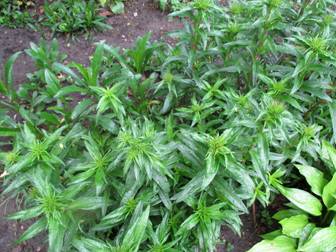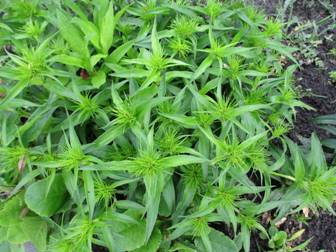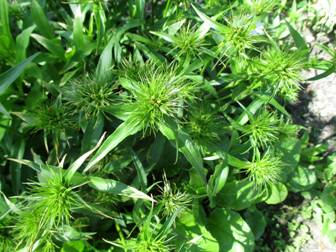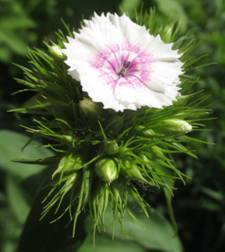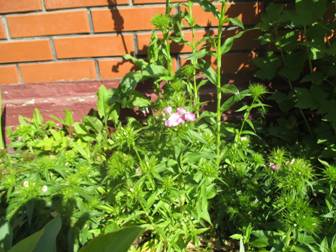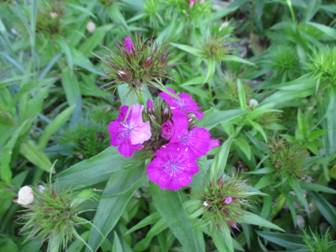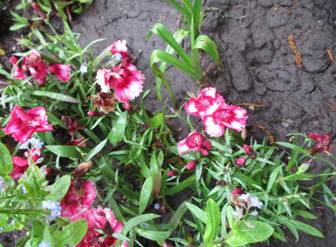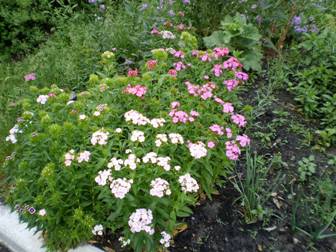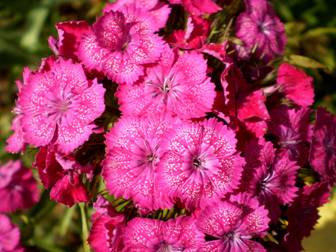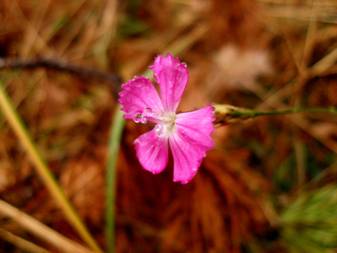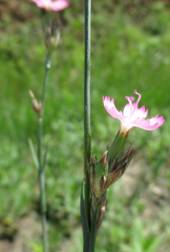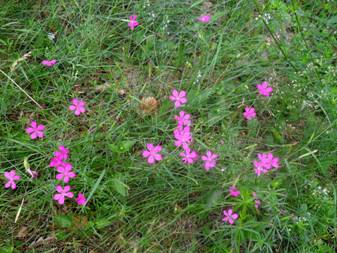Carnation, Pink (Dianthus), fam. Caryophyllaceae.
Cultivated ornamental carnations mostly depend to the species "Sweet William" (Dianthus barbatus).
Less luxuriant forest flowers are, presumably, Dianthus borbasii, and Maiden Pink (Dianthus deltoides).
Concerning the beneficial properties of cultivars and wild species of carnation, it is not so easily to learn about them. Why? A simple search in Russian or Ukrainian gives hundreds of results, but all of them are about cloves (they have the same name as carnation in both these languages - Гвоздика), or cloves essential oil, etc. However, this spice has no real relation to the flowers growing in Kyiv – this is the buds of a tropical tree Syzygium aromaticum! Unfortunately, many Russian or Ukrainian sites do not grasp this distinction, and state erroneously that "it is not only a beautiful flower, but also a valuable spice…".
Nevertheless, there are data on using the flowers and whole herb of our local carnation by folk medicine to deal with infertility, bleeding, and common cold. Also the flowers are considered edible (for example, as a dish decoration). It is not difficult to grow carnations – you should just provide them fertile soil and sun, or at least not very dense shadow. Usually, it blooms from the second year after sowing, and then regenerates itself from the hibernating decumbent shoots, roots or fallen seeds.
Cultivated species:
Wild-growing species:
